The Complete Guide to Compliance in Finland
Try the platform

Share the article
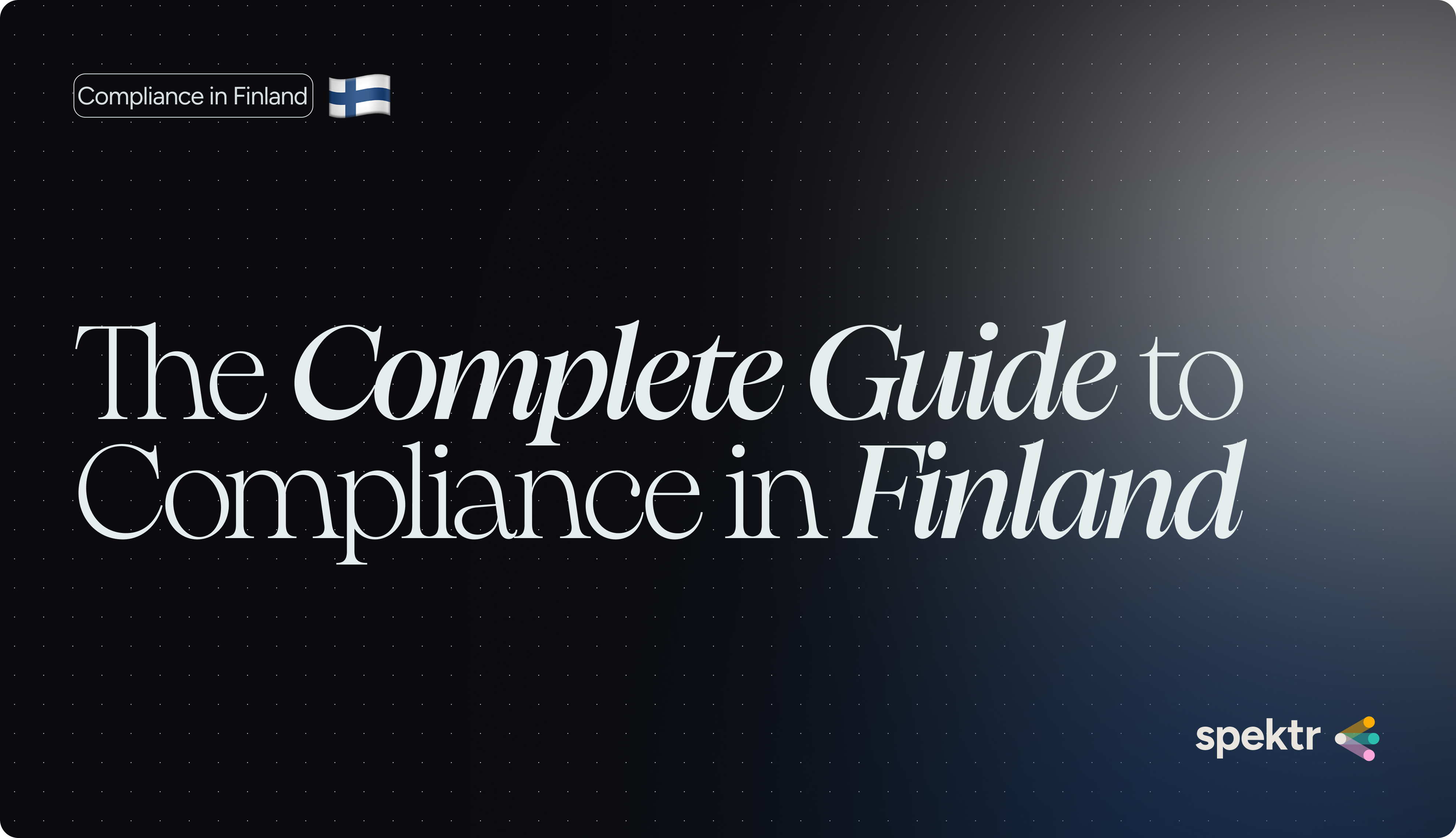
When compliance professionals evaluate digital identity infrastructure across Europe, Finland consistently ranks among some of the most advanced markets. The country's approach to authentication and business registration reflects a digitized society where electronic identification is ubiquitous. For organizations building compliance operations in the Nordics or across Europe, understanding Finland's ecosystem is essential – not just because the system works exceptionally well in most areas, but because its specific limitations reveal important insights about automation challenges.
Finland presents an interesting case study in compliance infrastructure: world-class digital identity verification paired with surprisingly manual processes for beneficial ownership verification. This combination creates both opportunities for efficient onboarding and authentication, and challenges for organizations seeking fully automated know-your-business (KYB) workflows.
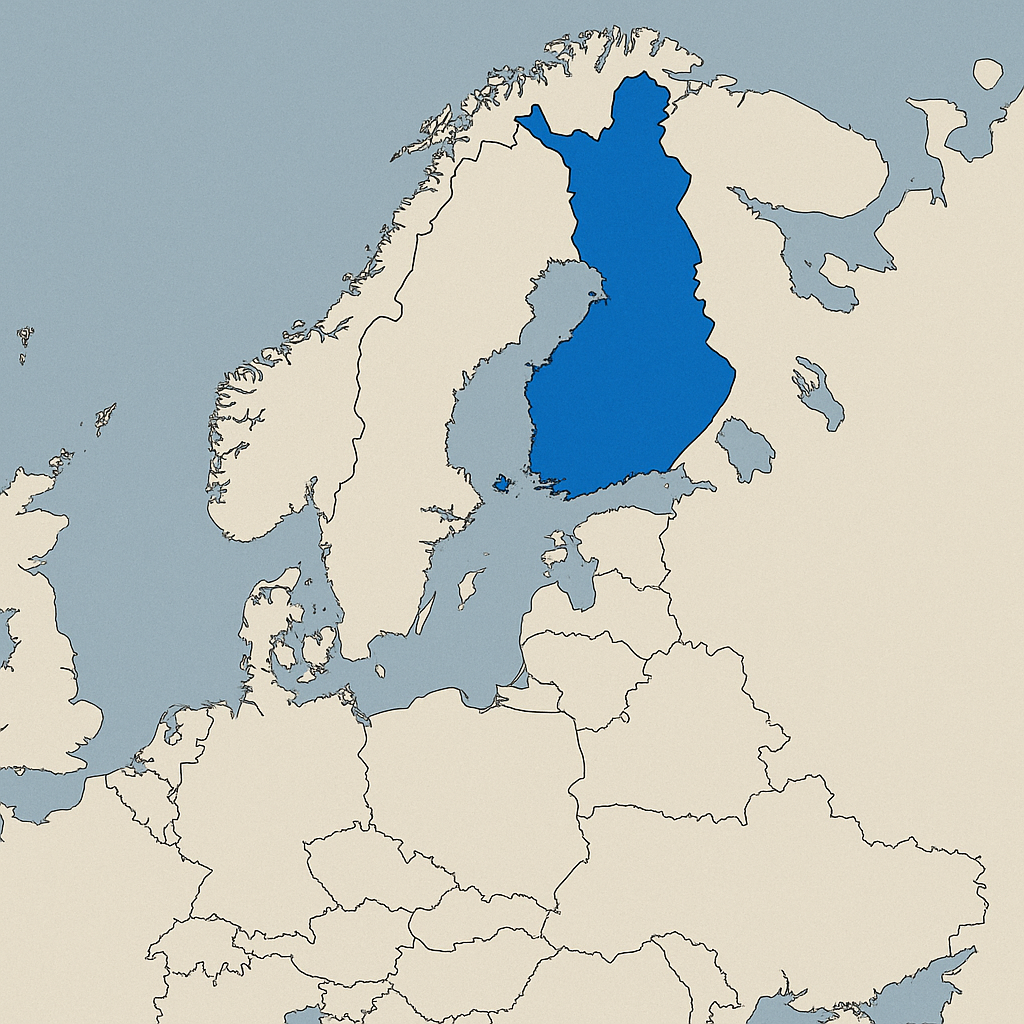
Finland's Digital Identity Ecosystem: A Nordic Success Story
Finland has built one of Europe's top digital identity infrastructures. Unlike markets where digital identity remains fragmented across competing providers with varying adoption rates, Finland has achieved near-universal coverage through the Finnish Trust Network (FTN). This is impressive from a technology perspective, whilst also fundamentally shaping how compliance ops work in Finland.
The FTN was established in 2019, replacing the older TUPAS system, and represents a unified framework for accessing multiple electronic identification methods through a single integration. Before FTN, service providers needed separate contracts and integrations with each Finnish bank offering authentication services. FTN centralized this, creating a standardized platform managed by Traficom, the Finnish Transport and Communications Agency.
For compliance professionals, this centralization means practical efficiency. When building onboarding flows or implementing customer verification procedures in Finland, you're not navigating a patchwork of incompatible systems. You're accessing a unified infrastructure that covers the vast majority of Finnish residents through methods they already use daily.
The breadth of FTN adoption is noteworthy. Finnish citizens use these authentication methods not just for banking, but for healthcare services, government interactions, rental agreements, and countless commercial transactions. This familiarity creates less friction in compliance workflows compared to markets where customers might encounter digital identity verification as an unfamiliar, high-friction process.
Understanding the Finnish Trust Network Components
The FTN encompasses two primary categories of electronic identification: BankID from Finnish banks and Mobiilivarmenne (Mobile ID) from telecommunications operators. Understanding the characteristics and appropriate use cases for each is crucial for building effective compliance workflows.
Finnish BankID: The Traditional Standard
Finnish BankID has been the dominant authentication method in Finland since the 1990s. Nearly every Finnish resident with a bank account has access to BankID through their banking institution. Multiple Finnish banks provide BankID services, including major institutions like Nordea, Osuuspankki, Danske Bank, Aktia, Handelsbanken, POP Bank, S-Bank, Säästöpankki, and Ålandsbanken.
Each bank's BankID operates through the same FTN framework, but with bank-specific authentication flows. From a user perspective, they select their bank and authenticate using their bank's online banking credentials. This typically involves a username, password, and often a one-time code or mobile confirmation.
BankID provides strong authentication and has been widely trusted for decades. However, recent security concerns have prompted Finnish authorities to recommend more careful use of BankID. The Bank of Finland and Finnish police have explicitly suggested that BankID should primarily be used for accessing banking services, while other strong authentication methods should be used for other services.
This recommendation stems from practical security considerations: if criminals gain access to someone's BankID credentials, they potentially gain access to bank accounts. Using separate authentication methods for non-banking services compartmentalizes this risk. For compliance professionals, this guidance means BankID remains highly trusted and widely used, but may not always be the preferred authentication method going forward.
Mobiilivarmenne: The Mobile-First Alternative
Mobiilivarmenne, or Mobile ID, represents Finland's mobile-first approach to digital identity. Provided by Finnish telecommunications operators (Telia, DNA, and Elisa), Mobiilivarmenne works through users' SIM or eSIM cards, enabling authentication directly from their mobile phones.
From a user experience perspective, Mobiilivarmenne is straightforward. Users establish their Mobile ID through their telecom operator, connecting it to their SIM card and setting a PIN code. Authentication then happens through their phone—they enter their phone number, receive a push notification or SMS, and confirm with their PIN.
Mobiilivarmenne has experienced significant growth in 2024. Finnish authorities have actively promoted it as a secure alternative to BankID for non-banking services. Telia reported a 30% increase in Mobiilivarmenne users during fall 2024, with over 50% growth in the latter part of the year. DNA saw increases exceeding 45%, while Elisa reported growth over 10%.
For compliance operations, Mobiilivarmenne offers several advantages. Users can authenticate without exposing banking credentials, the mobile-based flow works well for mobile-first onboarding experiences, and the authentication process is consistently implemented across all telecom operators. The user experience doesn't vary by which operator someone uses, unlike BankID where the flow depends on which bank issued it.
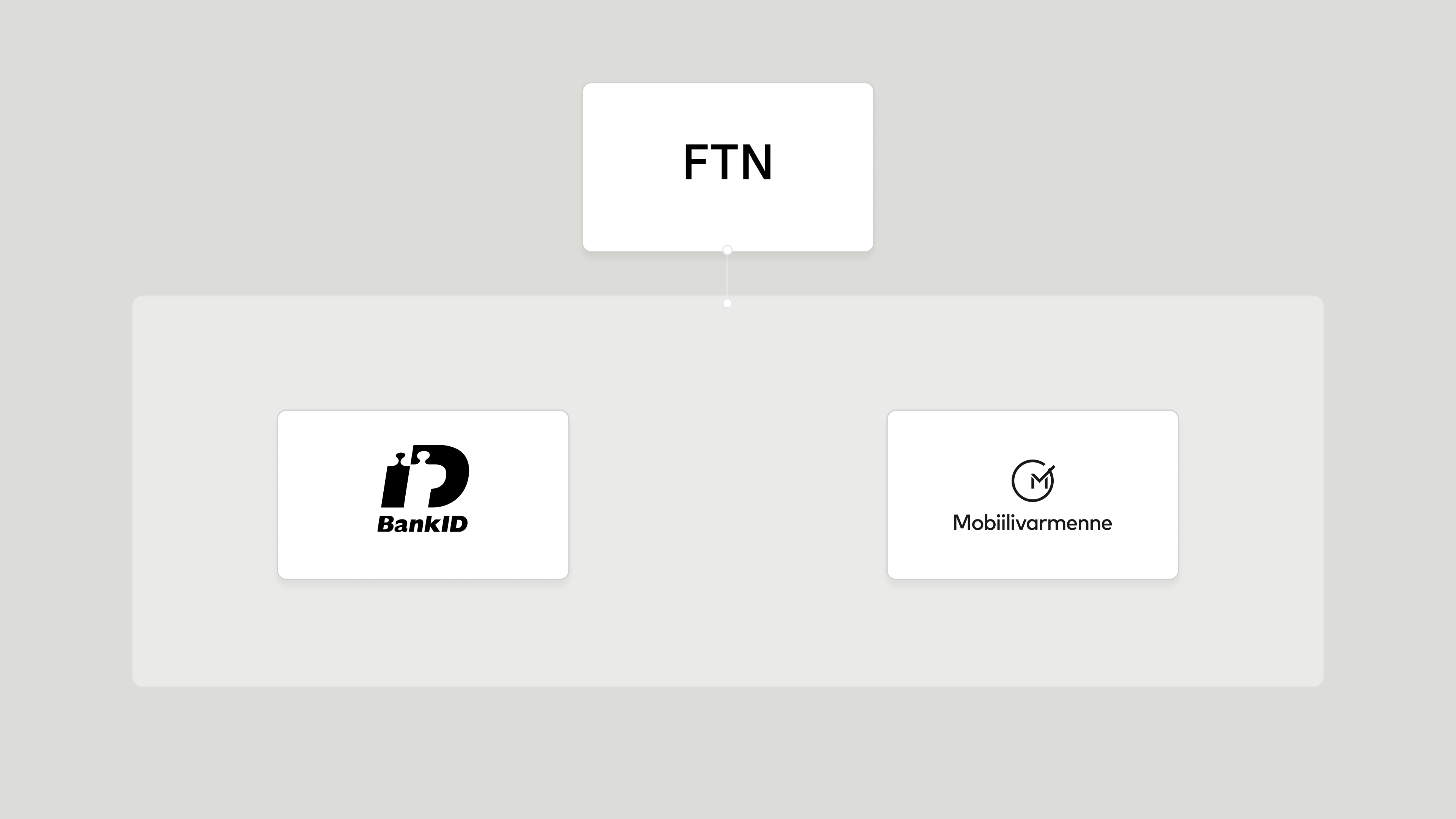
Additional Authentication Options
Beyond BankID and Mobiilivarmenne, Finland offers other authentication methods for specific use cases. The national ID card with electronic chip functionality provides another strong authentication option, though it requires a card reader and is less commonly used than mobile options.
A new option, hightrust.id, launched in late 2024 as a digital wallet solution for mobile devices. Certified to the highest eIDAS level, it represents Finland's movement toward next-generation digital identity infrastructure, though adoption is still early-stage.
For foreign nationals without Finnish BankID or Mobiilivarmenne, the Finnish Authenticator Identification Service provides an alternative. Foreign company directors or representatives can register using their passport or national identity card, enabling them to access Finnish e-services despite not having traditional Finnish authentication credentials.
Business Registry: The PRH Trade Register
Finland's business registry infrastructure centers on the PRH Trade Register, maintained by the Finnish Patent and Registration Office (Patentti- ja rekisterihallitus). The Trade Register provides comprehensive, reliable information on Finnish companies, and serves as the authoritative source for company verification in compliance workflows.
The PRH maintains several registries beyond just companies – foundations, associations, religious communities, and enterprise mortgages all have their own registry systems. For compliance purposes, the Trade Register is typically the primary focus, covering limited liability companies, cooperatives, general and limited partnerships, and other business entities.
Accessing Trade Register Data: The Virre Information Service
The Virre Information Service is PRH's online platform for accessing Trade Register data. Unlike some European registries where access requires subscriptions or complex authentication, Virre makes basic company information freely accessible to anyone.
Searching for a company in Virre is straightforward. You can search by business ID (Finland's unique company identifier, formatted as NNNNNNN-N) or by company name. Search results provide immediate access to basic company details including registered name, business ID, registered address, legal form, registration date, and current status.
Free Trade Register extracts are available for download as PDF documents. These extracts provide comprehensive information including company officers (board members, managing directors), authorized signatories, lines of business, share capital or other capital details, and historical changes to company structure.
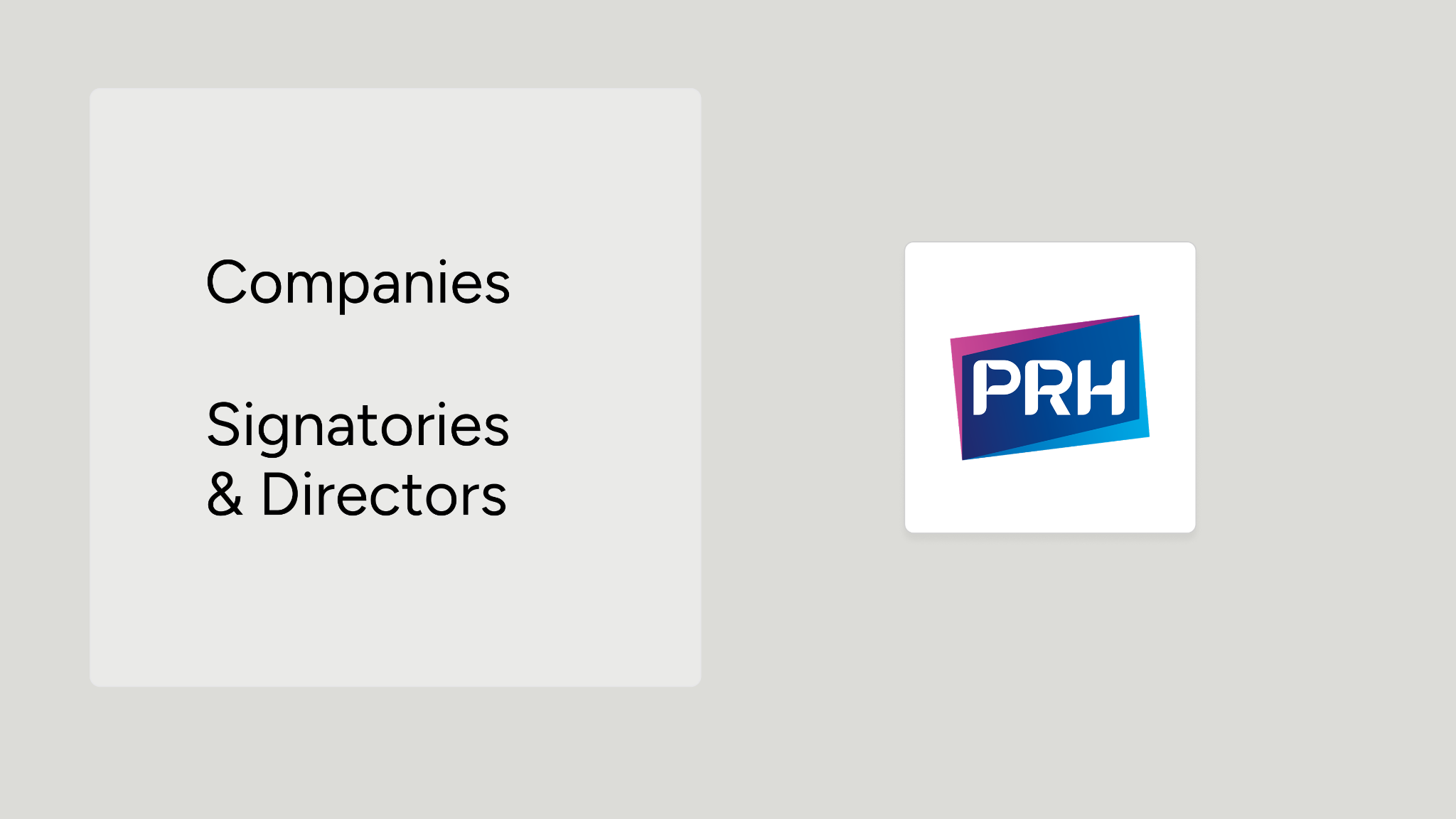
For more detailed information, Virre offers paid services. Financial statements can be purchased for companies required to file them. Organizational documents like articles of association are available. Register extracts translated into English can be obtained for international use.
The real-time nature of PRH data is valuable for compliance operations. When companies file changes – new directors, address updates, changes in authorized signatories – these updates appear in the Trade Register after processing. This means you're accessing current, authoritative information rather than potentially outdated secondary data.
Historical data is also maintained. You can generate Trade Register extracts for specific past dates, enabling you to verify what a company's structure looked like at any point in time since electronic records began (generally September 1992 onward). This historical access is particularly valuable for due diligence on past transactions or for verifying previous company structures.
The Beneficial Ownership Challenge: Where Automation Breaks Down
Here's where Finland's compliance infrastructure takes an unexpected turn. Despite having excellent digital access to most business information, beneficial ownership verification remains largely manual and document-based. This creates a significant friction point in otherwise intuitive compliance workflows.
Finland implemented beneficial ownership requirements in response to EU Anti-Money Laundering Directives, requiring most companies to register their beneficial owners with the Trade Register. Limited liability companies, cooperatives, and certain partnerships must file beneficial owner notifications. The beneficial owner threshold follows EU standards – individuals owning more than 25% of shares or voting rights, or exercising control through other means.
Companies have been required to file beneficial owner details since July 2019, and PRH has been actively enforcing this requirement. Companies that fail to file their beneficial owner information face serious consequences, including potential deregistration from the Trade Register. Tens of thousands of companies have received enforcement notices, and PRH has indeed deregistered companies that persistently fail to comply.
Why Beneficial Ownership Data Isn't Simply Accessible
Unlike most Trade Register information, beneficial ownership details are not publicly accessible through Virre or any other open interface. The information exists in the PRH systems, but access is restricted by law. You can see whether a company has filed its beneficial owner notification (that fact is public), but you cannot see who the beneficial owners actually are without meeting specific criteria.
PRH provides beneficial ownership information only to parties whose use of the data complies with the Act on Money Laundering. In practice, this means Finnish supervisory authorities, entities obligated to know their customers under AML regulations (banks, insurance companies, other financial institutions, real estate agents, auditors, accounting firms, law firms), and other parties with legitimate AML or counter-terrorism financing purposes.
Crucially, there's no API, no database query, no digital bulk access mechanism. Access happens through requesting individual beneficial owner extracts, one company at a time.
The Manual Extract Process
To obtain beneficial ownership information for a Finnish company, you must request a beneficial owner extract from PRH. This request requires several elements. You must identify yourself, as PRH needs to verify who is requesting the information. You must demonstrate that your use of the information complies with the Money Laundering Act – essentially providing a legitimate reason for needing the data. You must specify which company's beneficial ownership information you're requesting.
The request is processed manually by PRH. Once approved, you receive a beneficial owner extract as a PDF document. This extract contains the beneficial owner details for that specific company: names, dates of birth, nationalities, and the nature of their beneficial ownership (percentage of ownership, voting rights, or other form of control).
This extract is in Finnish or Swedish, depending on the language in which the company filed its beneficial owner notification. English translations are available as separate documents, but must be specifically requested.
Each extract is a paid service, with fees applying per company checked. For organizations conducting occasional verifications, these fees are reasonable. For organizations processing high volumes of company verifications, the per-extract fees and administrative overhead become significant.
The Compliance Workflow Impact
This manual process creates a clear bottleneck in automated compliance workflows. Consider a typical business onboarding process: you verify the customer's identity through FTN (seamless, instant, fully automated), you pull their company information from Virre (also seamless, instant, fully automated), and then you need beneficial ownership information…and suddenly you're filing manual requests, waiting for processing, receiving PDF documents, and manually extracting information.
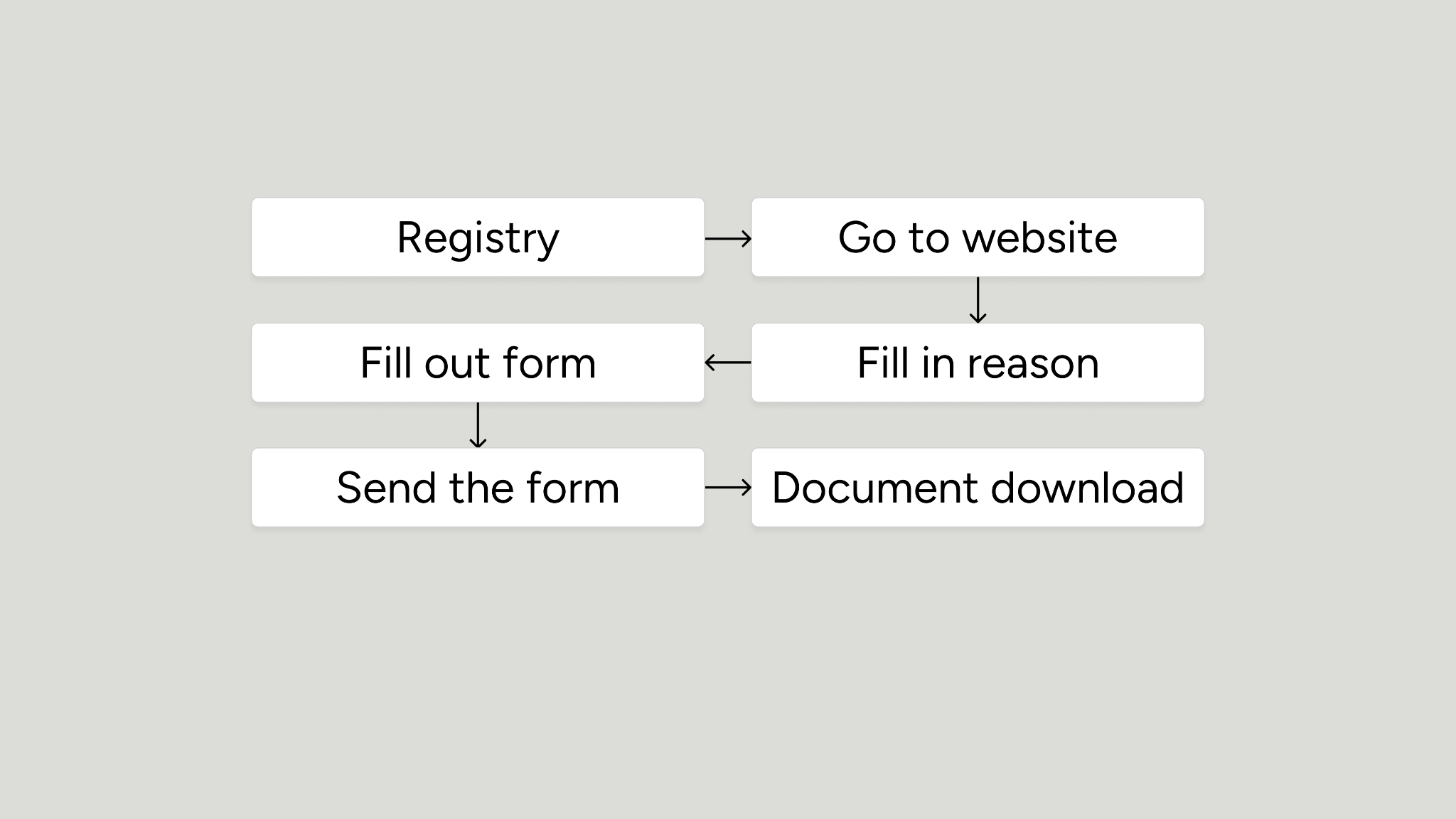
For compliance teams operating at scale, this friction is substantial. If you're onboarding hundreds or thousands of Finnish businesses, beneficial ownership verification becomes resource-intensive. The manual request process, processing time, PDF document format, and need for human review of Finnish-language documents all limit automation potential.
The challenge multiplies when operating across multiple jurisdictions. In some European markets, beneficial ownership data is accessible via API or structured database. In others, like Finland, it requires manual document requests. Building unified compliance workflows that handle these inconsistencies requires either accepting manual processes for all jurisdictions (inefficient) or building complex logic to route different verification steps through different processes based on jurisdiction (complex and error-prone).
The Monitoring Challenge: Ongoing Verification
Beneficial ownership monitoring adds another layer of complexity. While Trade Register changes trigger publicly visible register entries, beneficial ownership changes might not be immediately apparent. A company's beneficial owners might change, and while the company is required to file an updated notification, you would only discover this by requesting a new beneficial owner extract.
For organizations that need to monitor Finnish companies over time – maintaining ongoing due diligence on business relationships – beneficial ownership monitoring cannot be fully automated the way Trade Register monitoring can be. You're essentially conducting periodic manual checks rather than receiving automated notifications of changes.
Comparison with entity-level monitoring illustrates the gap: you can automatically monitor Finnish companies for changes in directors, address, business activities, or financial statement filings through Trade Register data. But beneficial ownership requires you to periodically request new extracts to check for changes.
Cross-Border Compliance Considerations
Most compliance operations aren't limited to Finland. You're likely working across Scandinavian markets, the broader EU, or globally. Each jurisdiction has its own registry infrastructure, authentication methods, and data access models.
Finland's specific characteristics (excellent digital identity through FTN, comprehensive Trade Register access through Virre, but manual beneficial ownership verification) represent just one pattern in a complex landscape. Sweden uses Swedish BankID with different characteristics. Denmark uses MitID. Norway has Norwegian BankID. Germany has the Handelsregister. The UK has Companies House. Each has different access methods, update frequencies, data formats, and restrictions.
For a compliance team onboarding a Finnish company with Swedish operations and a Danish subsidiary, you're navigating Finnish beneficial ownership requests, Swedish registry access, and Danish verification procedures simultaneously. Your compliance standards should be consistent – the same risk thresholds, the same verification depth, the same documentation requirements – but the mechanics of gathering data differ substantially by country.
This creates familiar challenges: development complexity from maintaining multiple integrations, workflow inconsistency when different countries require different processes, data normalization needs to create unified formats from disparate sources, and monitoring challenges from operating multiple parallel systems.
Organizations typically handle cross-border complexity either through separate processes per country (consistent with local requirements but operationally complex) or through generic processes with manual adaptation (unified but inefficient and error-prone). What's needed is a third approach: unified workflows that maintain consistent compliance logic while abstracting away jurisdictional differences in data access.
The Automation Opportunity: AI-Powered Document Processing
Despite the challenges, Finland's beneficial ownership process presents a clear automation opportunity. The bottleneck isn't that the information doesn't exist or isn't reliable, it's that accessing it requires manual request handling and document processing. Modern AI systems can address exactly these challenges.
AI-powered document processing can read and understand Finnish-language beneficial owner extracts, automatically extracting key data points including beneficial owner names, dates of birth, nationalities, ownership percentages, and types of control. Natural language processing handles Finnish legal terminology, character sets, and document structures without requiring translation as an intermediate step.
More interestingly, AI agents can potentially handle the request process itself. Rather than a compliance officer manually providing justification, filling out forms, and requesting extracts, an AI agent can execute these steps, providing appropriate reasoning based on your organization's AML obligations, completing request forms with required information, and retrieving the resulting documents.
This transforms beneficial ownership verification from a manual, time-consuming process into an automated workflow. Your compliance system identifies the need for beneficial ownership verification, an AI agent requests the appropriate extract from PRH, document processing extracts the relevant information, and the data feeds back into your compliance workflow automatically.
The human compliance officer's role shifts from administrative document handling to substantive decision-making: reviewing flagged risk factors, making judgment calls on ambiguous situations, and approving or declining customer relationships based on compiled information.

Finnish Language Considerations
Language is a dimension that's easy to overlook but essential for effective automation. All Finnish Trade Register documents and beneficial owner extracts are in Finnish or Swedish. Company names, legal forms, addresses, and beneficial owner information all appear in the language the company used when filing.
For automated systems, this requires genuine Finnish language understanding. Company name screening against sanctions lists, PEP databases, and adverse media requires handling Finnish characters (ä, ö), Finnish naming conventions, and Finnish legal forms (osakeyhtiö, not limited company). Document extraction from beneficial owner extracts requires understanding Finnish legal terminology and document structures.
Simple translation doesn't suffice. You need systems that understand that "Oy" and "osakeyhtiö" represent the same legal form, that "hallituksen jäsen" means board member, that Finnish addresses follow specific formatting conventions. Effective automation requires language models trained on Finnish business data and documents, not just generic translation capabilities.
The same considerations apply to ongoing monitoring. Adverse media screening in Finnish requires understanding context and sentiment in Finnish-language sources. A keyword match in Finnish news articles might not indicate actual risk unless the system understands what's being reported.
Best Practices for Finnish Compliance Operations
Based on the realities of Finland's compliance landscape, several best practices emerge for organizations building efficient Finnish compliance operations.
Leverage FTN for identity verification: Finland offers one of Europe's best digital identity infrastructures. Build authentication flows that support multiple FTN methods, allowing users to choose their preferred option. Support both BankID and Mobiilivarmenne rather than limiting to one method – different users have different preferences and availability.
Use Virre effectively: Basic company verification should be quick and free through Virre. Pull Trade Register extracts as part of standard onboarding, verify company officers and authorized signatories from official extracts rather than relying on customer-provided information, and implement automated monitoring of Trade Register changes for ongoing customer relationships.
Plan for manual beneficial ownership verification: Until processes become more automated, accept that beneficial ownership verification requires specific handling. Budget for per-extract fees when calculating compliance costs, allocate staff time for manual requests and document review, and implement clear internal procedures for requesting and processing beneficial owner extracts.
Invest in Finnish language capabilities: Effective Finnish compliance requires genuine Finnish language understanding. Whether through hiring Finnish-speaking compliance staff, using specialized automation tools with Finnish capabilities, or partnering with local service providers, ensure your team can work effectively with Finnish-language documents and data.
Maintain consistent standards across jurisdictions: Even though Finnish processes differ from other countries, your compliance standards should remain uniform. Define clear risk thresholds that apply regardless of jurisdiction, specify documentation requirements that don't depend on which country's registries you're accessing, and implement risk assessment logic that evaluates all customers consistently.
Consider contract client status with PRH: If you regularly need Trade Register information beyond free basic data, becoming a PRH contract client provides reduced fees and streamlined access. This is particularly valuable for high-volume operations or organizations frequently purchasing financial statements or organizational documents.
Build monitoring into ongoing processes: Finnish Trade Register updates in real-time make continuous monitoring practical and valuable. Rather than annual re-verification of Finnish entities, implement automated monitoring that alerts you to relevant changes – new directors, address changes, financial statement filings, or registry entries indicating potential issues.
Document your verification procedures: Finnish beneficial ownership verification involves manual requests with regulatory justification. Maintain clear documentation of when you request information, what justification you provide, and what information you receive. This documentation demonstrates compliance with data protection requirements and provides audit trail for regulatory review.
Future Outlook: Potential Changes to UBO Access
Finland is not static. The European Union continues to develop beneficial ownership transparency requirements, and individual member states are modernizing their implementations. Finland's PRH has indicated ongoing development of beneficial owner information services, with EU-funded projects improving the system.
There's potential for more automated access to beneficial ownership information in the future. The EU's push for interconnected beneficial ownership registers might facilitate cross-border access. Technological developments might enable more structured data access while maintaining appropriate restrictions on who can access the information.
For now, organizations building Finnish compliance operations should plan for current realities while remaining adaptable to potential future changes. The core challenge (balancing transparency requirements with data protection and ensuring appropriate access restrictions) will persist even as specific implementation mechanisms evolve.
How spektr Enables Efficient Finnish Compliance
At spektr, we've built our compliance automation platform to address the specific challenges of operating across European jurisdictions, including Finland's unique combination of excellent digital identity and manual beneficial ownership verification.
For Finnish compliance specifically, we provide:
FTN integration for seamless authentication: Our platform integrates with the Finnish Trust Network, supporting both BankID and Mobiilivarmenne for customer authentication. Your Finnish customers can verify their identity using their preferred authentication method, and you maintain consistent onboarding workflows regardless of which option they choose.
Automated Trade Register verification: We connect directly to PRH Virre, pulling Trade Register data in real-time and accessing official documents from authoritative sources. Company verification happens instantly, with structured data extraction from Finnish registry documents.
AI-powered beneficial ownership handling: Our AI agents handle the complexity of Finnish beneficial ownership verification. They can automate the request process, providing appropriate justification for data access, and extract information from Finnish-language beneficial owner extracts. What's currently a manual bottleneck becomes an automated workflow component.
Finnish language AI: Our systems genuinely understand Finnish language and legal terminology. They can extract information from Finnish documents, conduct adverse media screening in Finnish, and handle Finnish entity names correctly, including proper handling of Finnish characters and legal forms.
Unified cross-border workflows: When you're verifying entities across Finland, Sweden, Germany, or other European markets, spektr provides consistent interface and workflow. You maintain the same compliance standards and process efficiency regardless of which jurisdictions you're operating in.
Continuous monitoring: For Finnish entities, we provide automated monitoring of Trade Register changes and can implement periodic beneficial ownership re-verification on schedules you define.
Normalized data formats: We transfigure Finnish registry data into standardized formats consistent with data from other jurisdictions, making it easier to apply uniform risk assessment logic and generate consistent reporting.
Our goal is to let you focus on compliance decisions and risk assessment while we handle the technical complexity of navigating Finnish authentication systems, accessing registry data, processing Finnish-language documents, and managing the manual elements of beneficial ownership verification. Finland's excellent digital identity infrastructure becomes an advantage rather than a source of friction, and beneficial ownership verification becomes efficient rather than a bottleneck.
If you're looking to optimize your Finnish compliance operations or build more efficient Nordic workflows, we'd be happy to discuss how spektr can help. Reach out to learn more about our approach to compliance automation and how we're helping teams streamline verification across European markets.




